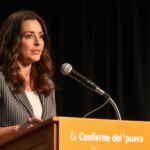Overview of the SEP’s Initiative for Indigenous Education
Mario Delgado Carrillo, the Secretary of Public Education (SEP), announced that as part of the social justice initiative promoted by President Claudia Sheinbaum Pardo, the National Institute for Adult Education (INEA) currently provides services to 7,932 indigenous individuals aged 15 and above. These services include bilingual indigenous literacy, as well as primary and secondary education.
Key Achievements from January to August 2025
- A total of 2,811 individuals from indigenous communities have completed some level of education through the INEA’s offerings in native languages.
- Among these, 2,508 have learned to read and write in their mother tongue and received a literacy certificate.
- 176 indigenous youth and adults have finished primary school, while 127 have completed secondary school and received official certification from the SEP.
INEA’s Reach and Impact
According to data from INEA’s Directorate of Prospective, Accreditation, and Evaluation, out of the 7,932 indigenous individuals receiving educational support:
- 4,910 are women and 3,222 are men who receive free counseling, support, and educational materials across Mexico.
The majority of these individuals are engaged in learning to read and write in their native language through the INEA’s Indigenous Bilingual Literacy Model, which supports 66 out of the 68 indigenous languages spoken nationally, along with 110 linguistic variants. Spanish is also introduced as a second language.
Current Educational Status
- 62 indigenous students are enrolled in primary education, while 142 are studying for their secondary school certificate.
INEA’s Presence Across Mexico
To effectively reach this target population, the INEA has established educational modules for indigenous literacy in the following Mexican states: Campeche, Chiapas, Chihuahua, Durango, Estado de México, Guerrero, Hidalgo, Michoacán, Nayarit, Oaxaca, Puebla, Querétaro, Quintana Roo, San Luis Potosí, Sonora, Tabasco, Veracruz, and Yucatán.
The educational services and materials cover Mexican indigenous languages such as Amuzgo, Chatino, Cora, Chinanteco, Huave, Maya, Mazahua, Mazateco, Mixe, Mixtec, Nahuatl, Otomi, Pame, Popoluca, Tarasco, Rarámuri, Tlapaneco, Totonaco, Triqui, Yaqui, Zapoteco, and Zoque.
Contact Information
For more information on INEA’s educational services, interested parties can contact the toll-free hotline at 800 00 60 300 or visit the official website www.gob.mx/inea. The INEA can also be found on official social media platforms, including Facebook and YouTube as “INEA Nacional,” X (@INEAmx), and Instagram (inea_mx).
Key Questions and Answers
- What is the SEP’s initiative? The SEP, under Mario Delgado Carrillo, is promoting social justice through the INEA to provide literacy and basic education services to 7,932 indigenous individuals aged 15 and above.
- What languages are supported by the INEA? The INEA supports 66 out of the 68 indigenous languages spoken in Mexico, along with 110 linguistic variants. Spanish is also introduced as a second language.
- How many individuals have completed their education? From January to August 2025, a total of 2,811 indigenous individuals have completed some level of education through the INEA’s offerings.
- What support is available for indigenous students? The INEA offers free counseling, support, and educational materials to 4,910 women and 3,222 men across Mexico.






